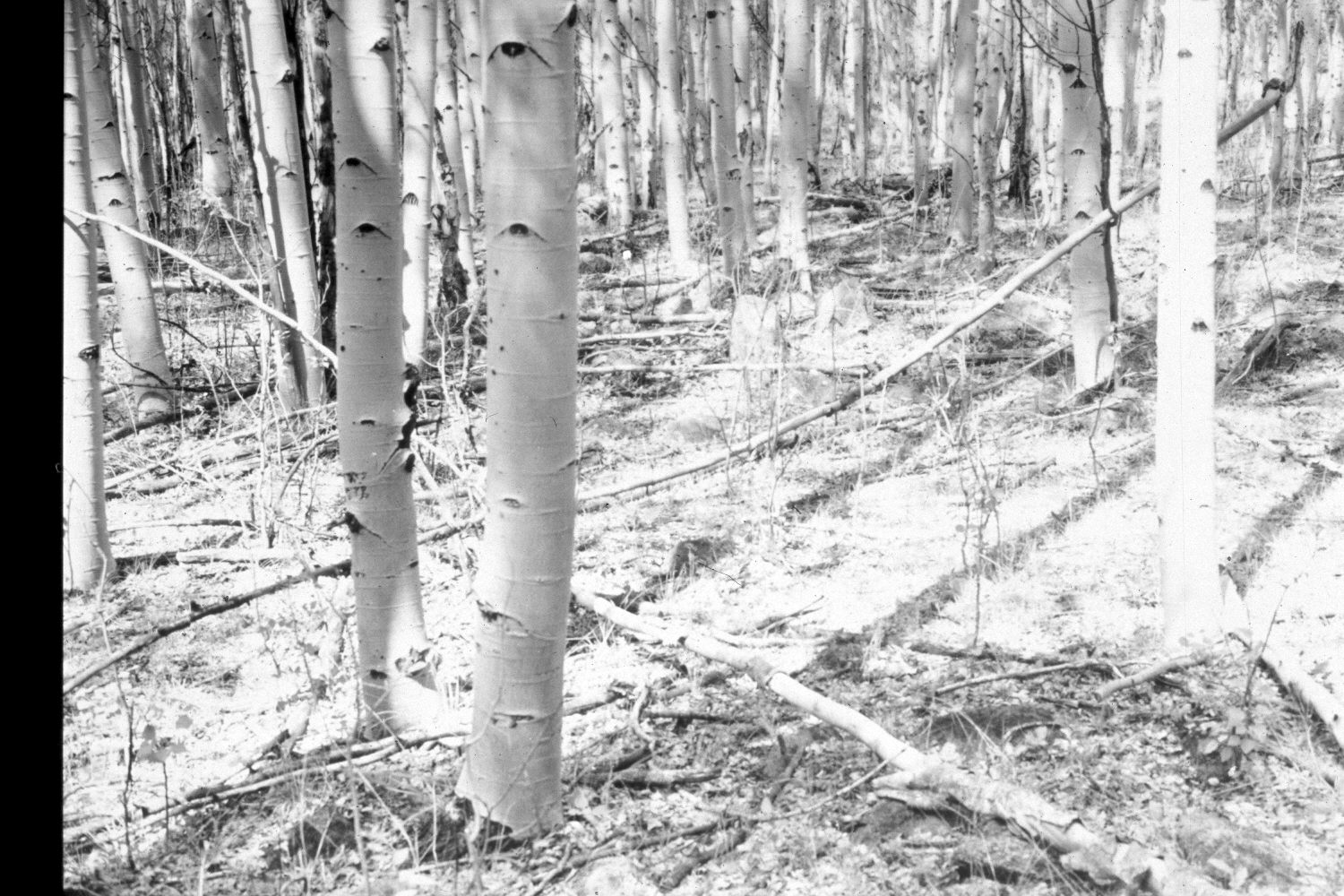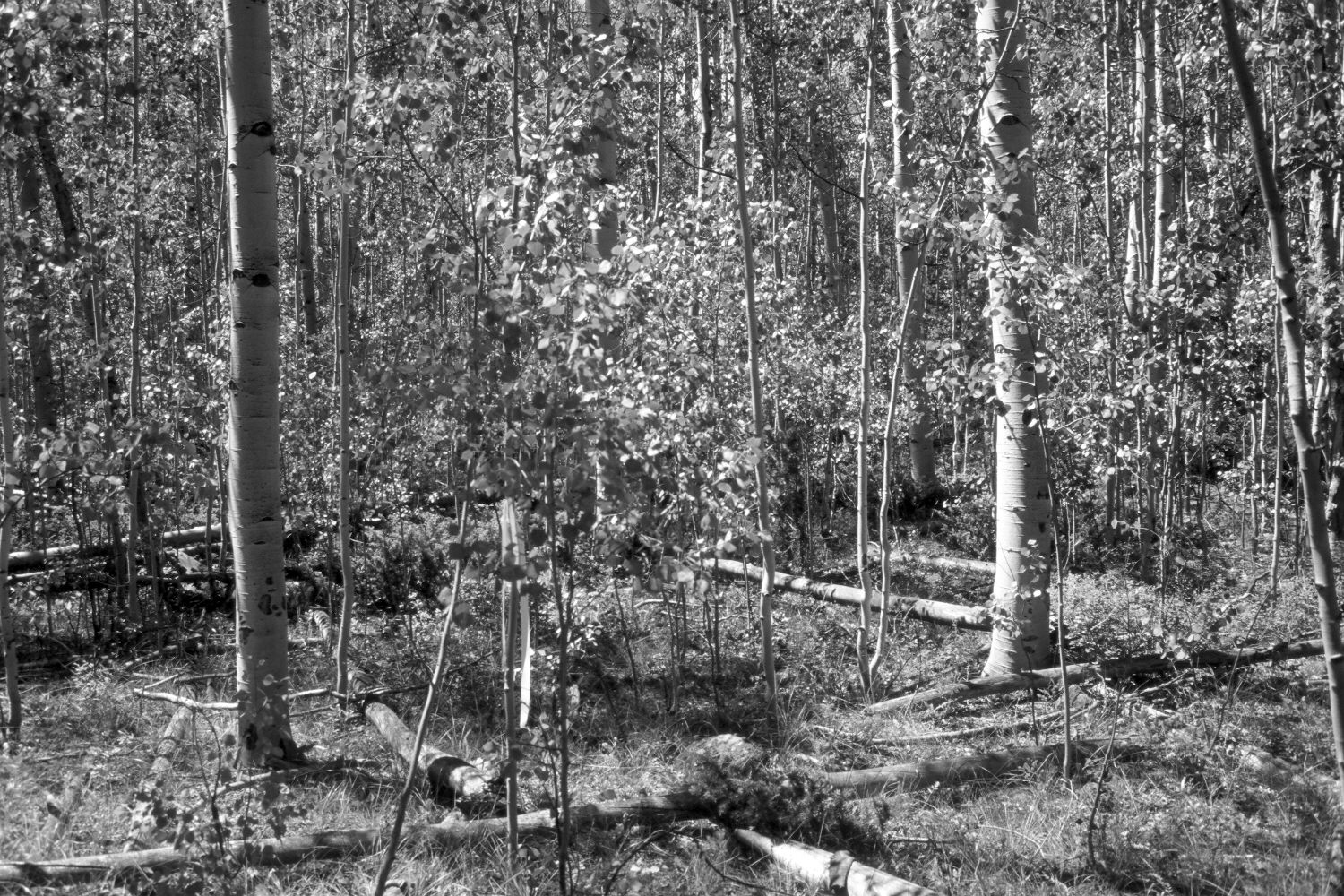Pacer Lake
1948

1953

2003

Description:
Plate 393X. Pacer Lake 1948 - 1953 - 2003 The Pacer Lake Photo Plot Transect (a.k.a. Coyote Zone II) on the westside of Escalante Mountain was established in 1943 and reread in 1948, 1953, and 1979. The transect is situated on a low pass approximately 400 yards south of Pacer Lake. The transect consists of two segments. The first leg is 1000 feet in length and runs in a northwesterly direction from a common starting point, while the second leg is 1500 feet in length and runs in an easterly direction. The first leg samples a silver sage meadow, while the second leg samples silver sage and aspen communities. When the transect was established, the area was very heavily grazed by cattle. “All the aspen have been hedged as high as the animals can reach, and many trees have died…There is very little reproduction of aspen here, but 2-3 miles south where livestock have been fenced out,…aspen is reproducing in fine shape.” Conditions had improved by 1948, however, and there was “a great display of aspen regeneration…two to three years old.” Sheet erosion, though, was common in the sage meadow. In 1953, Range Conservationist I.H. Johnson found that there was no noticeable improvement in the vegetation trend but that the soil trend was still down. “Range condition is very poor to poor.” After remeasuring the transect in 1979, Dr. Jim Bowns, range ecologist at Southern Utah University, observed that “It is apparent now that this area has improved [since 1943]…this is most noticeable in the increase of herbaceous species and the abundance of aspen shoots. This range is probably no better than a high fair condition…,but the trend is up” (unpublished reports in the range files on the Escalante Ranger District, Dixie National Forest, Escalante, UT). Plate 393x is viewed west-northwest back along the second leg of the Photo Plot Transect from its endpoint (Plot D-32). The white flagging in the 2003 retake marks the transect centerline. Aspen suckers were abundant in the 1948 image, but by 1953 most had been killed by repeated browsing. More recently, however, this part of the aspen stand successfully regenerated, which is highly unusual for aspen clones on the Dixie National Forest (Kay and Bartos 2000). There was no sign of livestock in the part of this aspen stand, nor were there any signs of deer or elk. For whatever reason, this area has not been grazed in many years, and aspen successfully regenerated, as would be predicted from exclosure studies (Kay and Bartos 2000). Snowberry is common under the regenerated aspen. Rose and Oregon grape (Berberis or Mohonia repens) are also present, as are nodding brome (Bromus anomalus) and Stipa spp.
Photo Information:
U.S. Forest Service photographs (unnumbered) taken by Walter P. Cottam on June 23, 1948; and I.H. Johnson on August 17, 1953; retake by Charles E. Kay on August 31, 2003 - - Photo No. 5279-14A. Original photographs, negatives, and narrative reports held in the range files on the Escalante Ranger District, Dixie National Forest, Escalante, UT.
Vegetative Community:
Sagebrush, Aspen
Location:
South West: Section 34, Range 1 West, Township 32 South; UTM of transect starting point 421500 E, 4204000 N; elevation 9,400 ft.


 Utah 4-H & Youth
Utah 4-H & Youth